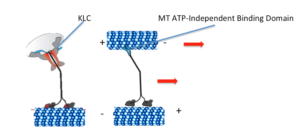Microtubule (MT) sliding in pancreatic beta cells
Diabetes mellitus is a major metabolic disorder currently affecting 5–10% of the population in the western societies. In type-2 diabetes, which accounts for 90% of all diabetes, insulin is not released into the bloodstream in sufficient amounts. Insulin secretion is a function of pancreatic beta cells. Beta cells have to secrete restricted doses of insulin, in order to reduce blood sugar to normal levels but do not completely deplete it; this requires tight coordination between intracellular insulin storage and secretion. Our data indicate that this coordination is regulated by cytoskeletal polymers microtubules (MTs), which are known to serve as intracellular highways; molecular motors move along MTs to transport and park membrane organelles and insulin granules at specific cellular locations.
Our lab has shown that the dense MTs in pancreatic beta cells restrain insulin granules in “cages”, restricting insulin granule availability for glucose-stimulated insulin secretion. Glucose stimulation promotes the novel MT sliding process in beta cells. MT sliding is the active transport of MT, where a kinesin binds to MTs and use it as a cargo reconfiguring entire networks. We want to determine the physiological regulatory mechanism leading to MT sliding.
Interestingly enough, MT sliding correlates with granule mobilization and thus may be a key regulatory mechanism for resolving “caged” insulin granules by impacting MT network configuration.
Schematic of MT Sliding
